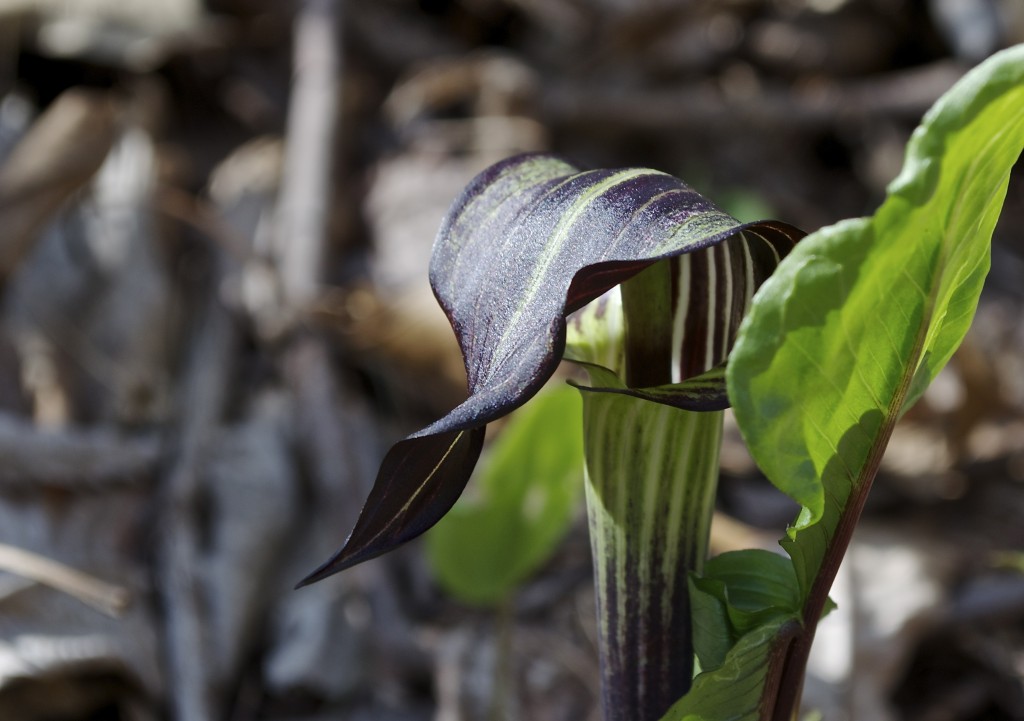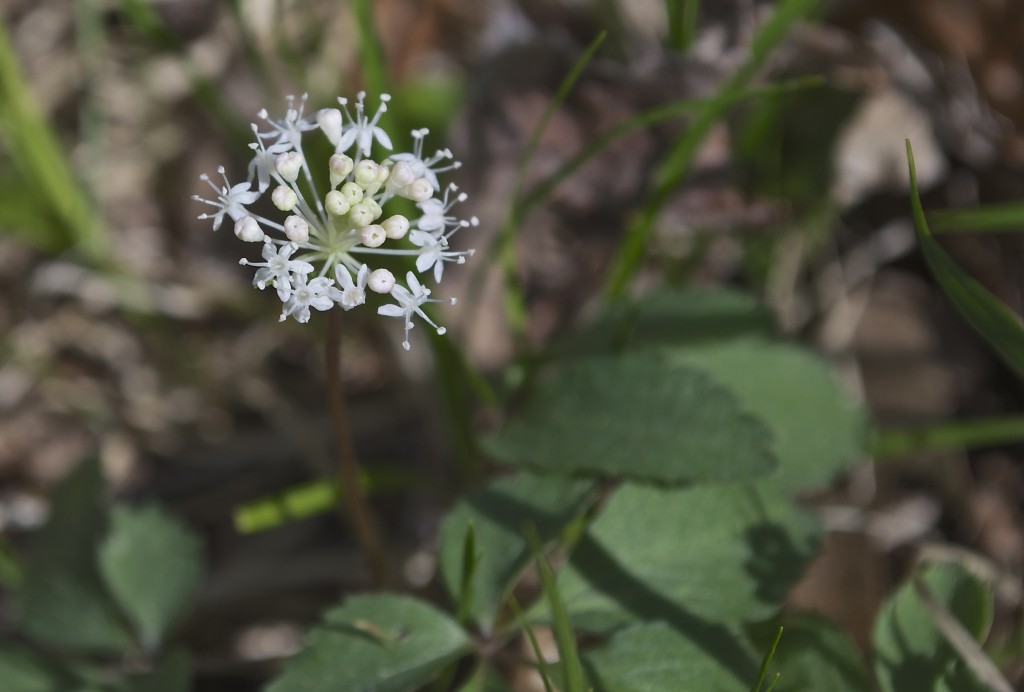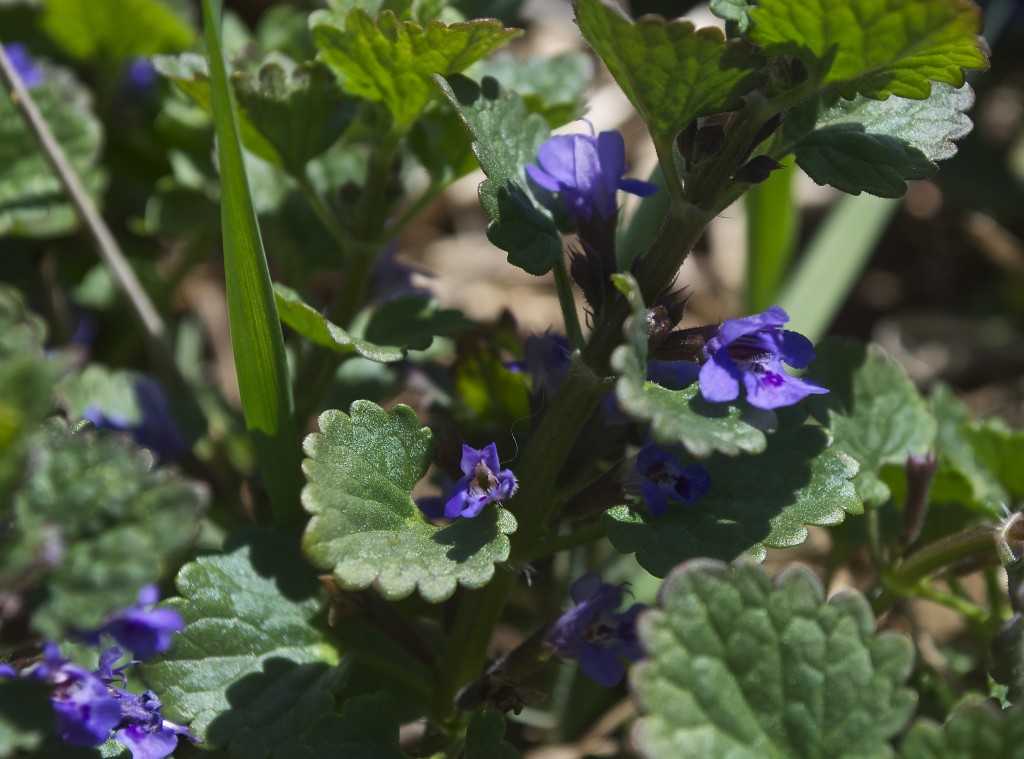Member of the Mustard family. Blooms all summer. “Historically” used to make a medicinal tea. Several moth and butterfly varieties lay eggs on them. Native to Eurasia.
Common Winter Cress, Yellow Rocket, Bittercress, Wound Rocket (Barbarea vulgaris)

There are several similar-looking kinds of Speedwell. This kind has flowers on long stalks instead of stalkless in the axils. In Italian it’s known as “gli occhi della Madonna,” which means “the eyes of the Virgin Mary.” Native to Europe. Photo: May 8, 2013.
Bird’s-eye Speedwell, Persian Speedwell (Veronica persica)
 The first Jack in the Pulpit of the season, a very dramatic black and green striped and slightly ruffled one! Some folklore from Wikipedia: “One account from the Meskwaki Indians states that they used it to determine the fate of the sick by dropping a seed in a cup of stirred water; If the seed went around four times clockwise, the patient would recover, if it went around less than four times they would not.” Native. Photo: May 3, 2013.
The first Jack in the Pulpit of the season, a very dramatic black and green striped and slightly ruffled one! Some folklore from Wikipedia: “One account from the Meskwaki Indians states that they used it to determine the fate of the sick by dropping a seed in a cup of stirred water; If the seed went around four times clockwise, the patient would recover, if it went around less than four times they would not.” Native. Photo: May 3, 2013.
Jack in the Pulpit, Indian Turnip (Arisaema triphyllum)
 This is not the ginseng used in herbal medicine but it’s the same family (Ginseng). Native. They bloom for about three weeks in mid to late spring. Has yellowish clustered berries in July to August. US Forest Service: Native Americans “used tea of the whole plant for colic, indigestion, gout, hepatitis, shortness of breath, fainting, and nervous debility. Its distinctive tubers can be eaten raw or boiled.”
This is not the ginseng used in herbal medicine but it’s the same family (Ginseng). Native. They bloom for about three weeks in mid to late spring. Has yellowish clustered berries in July to August. US Forest Service: Native Americans “used tea of the whole plant for colic, indigestion, gout, hepatitis, shortness of breath, fainting, and nervous debility. Its distinctive tubers can be eaten raw or boiled.”
 Dark blue and purple orchid-like flowers. This plant is introduced and invasive. It belongs to the Mint family. (Photo taken April 30, 2013. I’m way behind on posting photos, so I’m going to add the actual dates I collected the photos, for the AFs who are trying to compare this year with last year—you know who you are!)
Dark blue and purple orchid-like flowers. This plant is introduced and invasive. It belongs to the Mint family. (Photo taken April 30, 2013. I’m way behind on posting photos, so I’m going to add the actual dates I collected the photos, for the AFs who are trying to compare this year with last year—you know who you are!)
Creeping Charlie, Ground Ivy, Gill-over-the-ground, Haymaids (Glechoma hederacea)